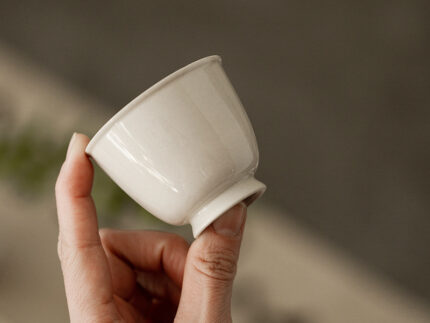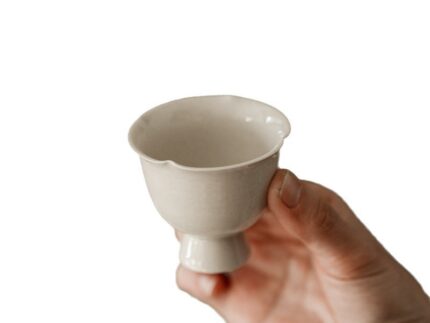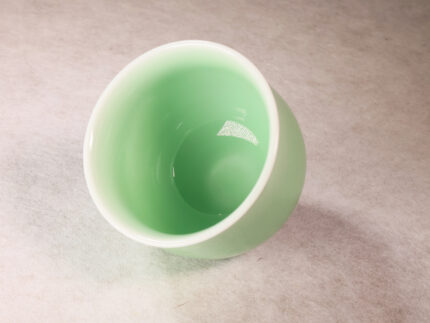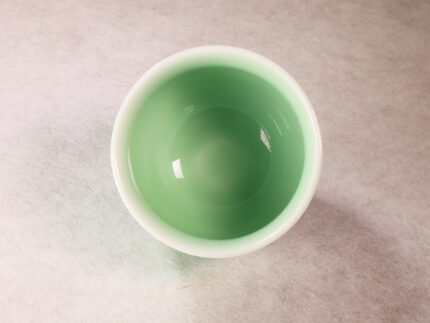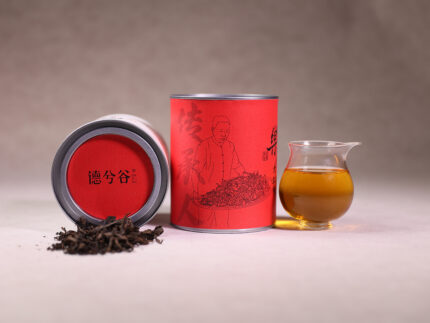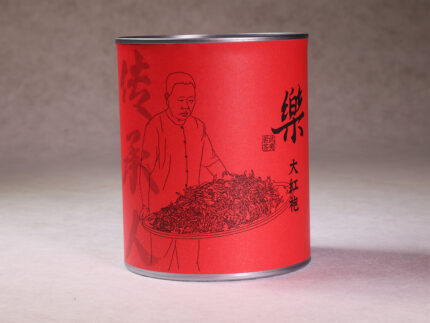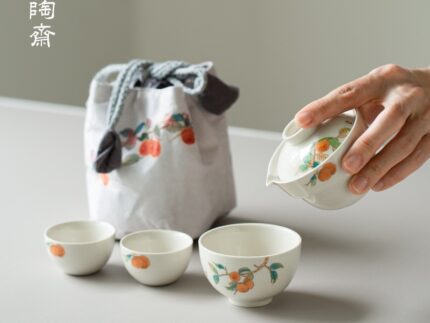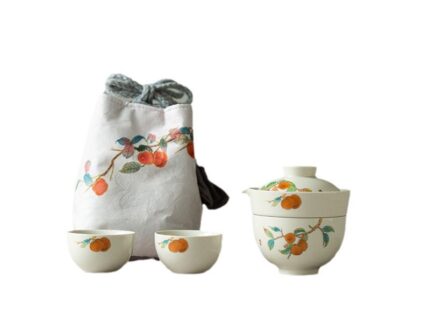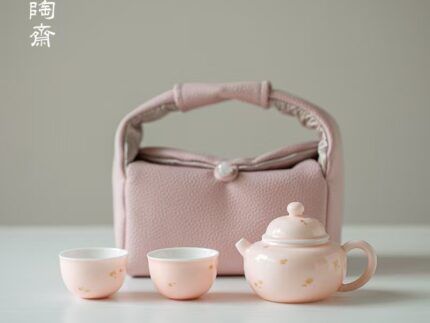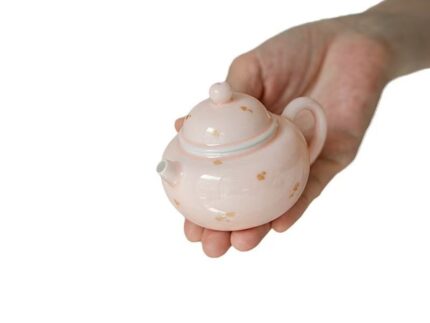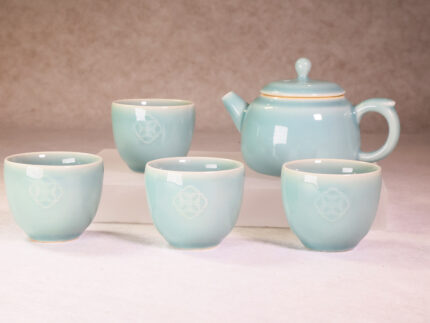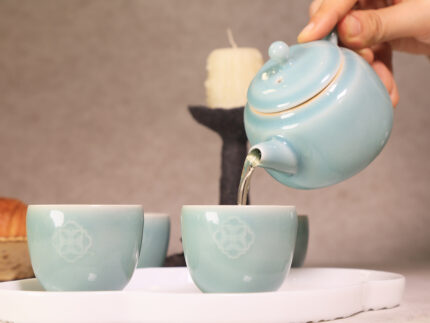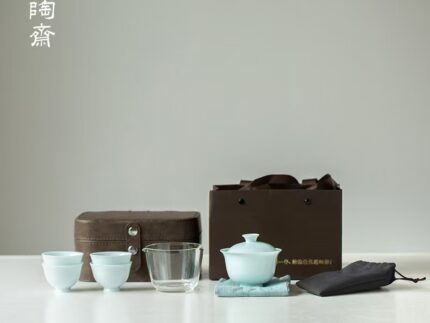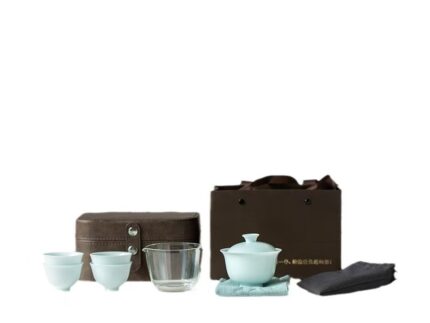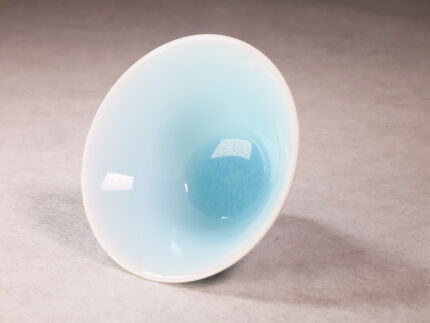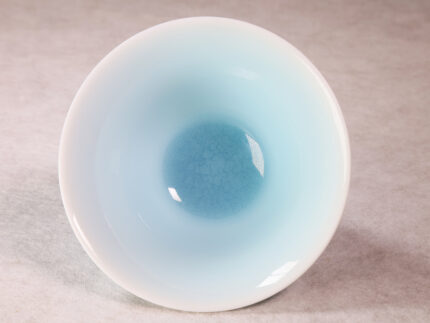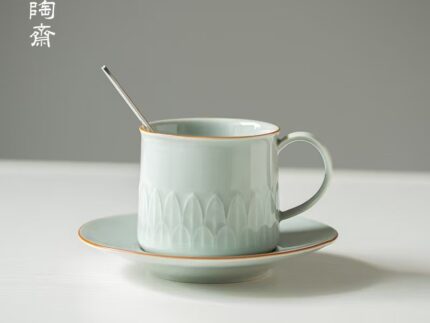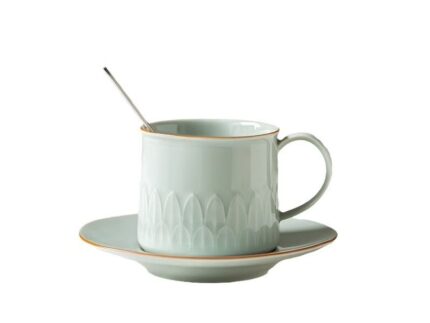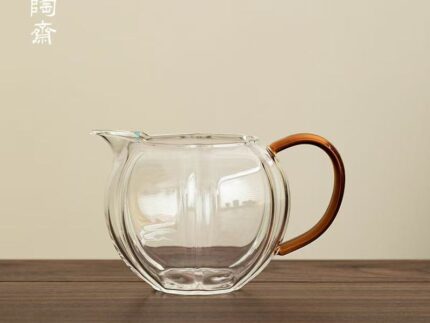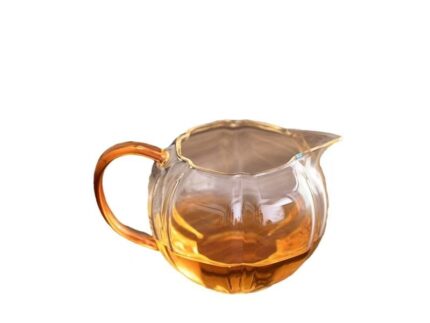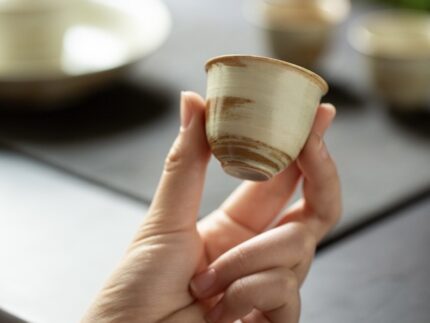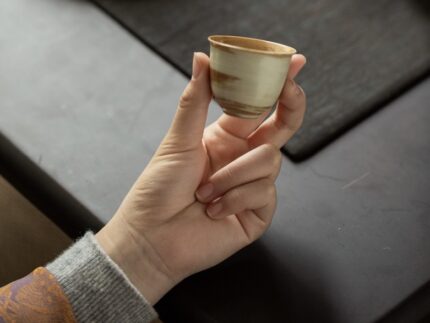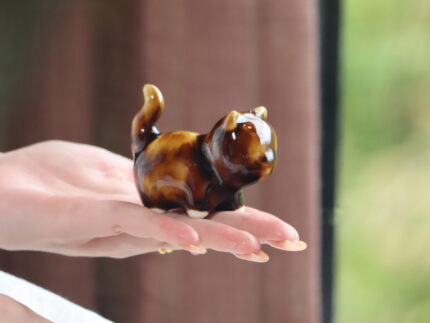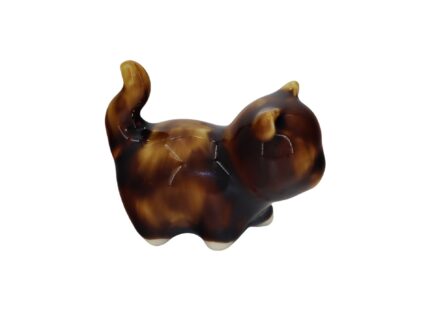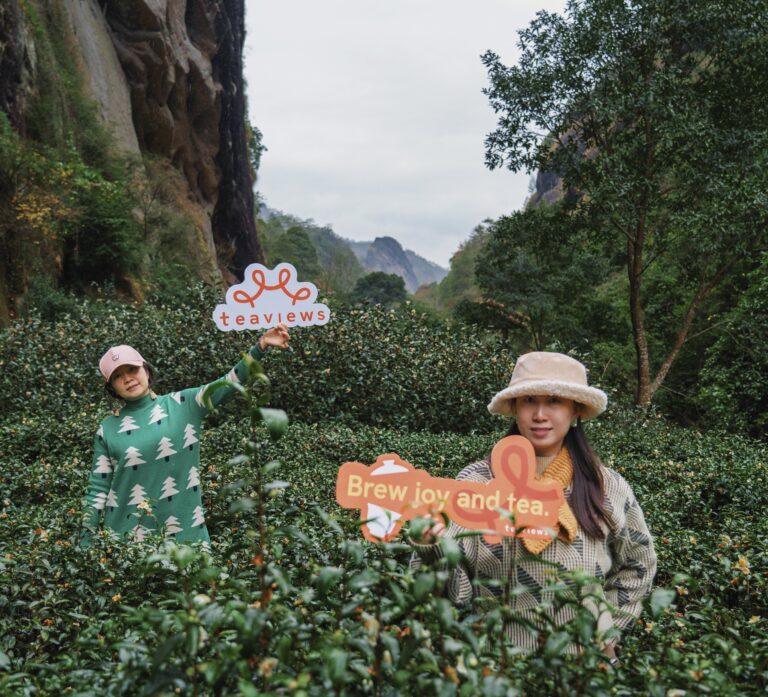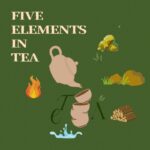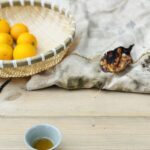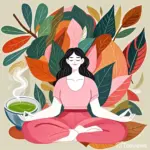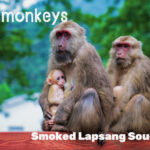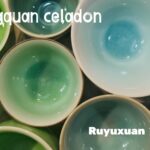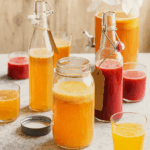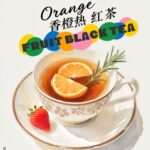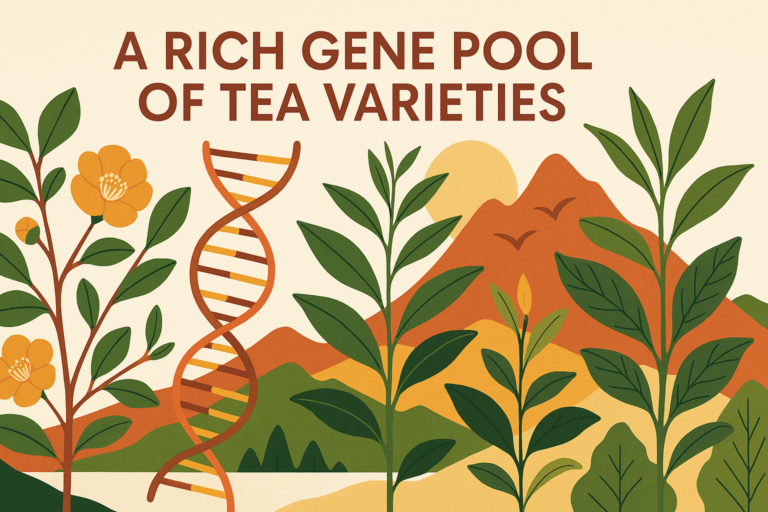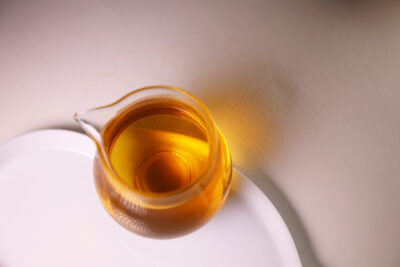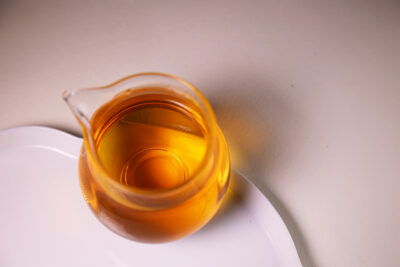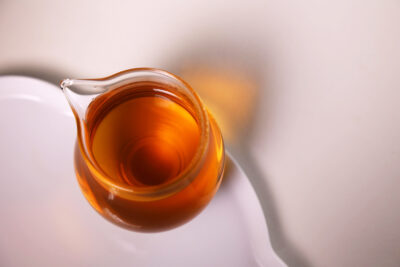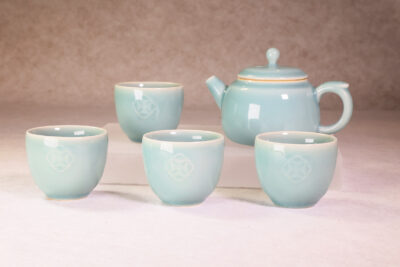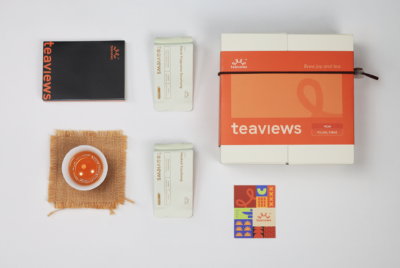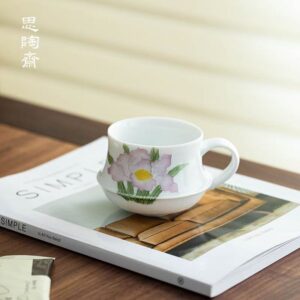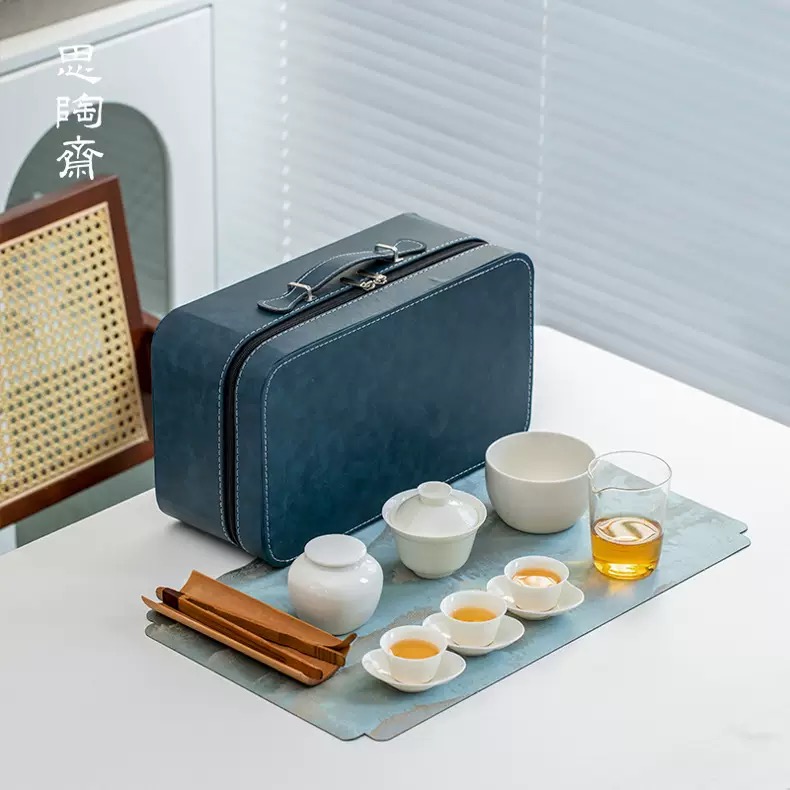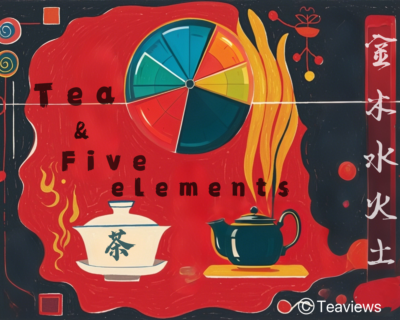
Blog
What is Oolong Tea All About and How Has It Evolved
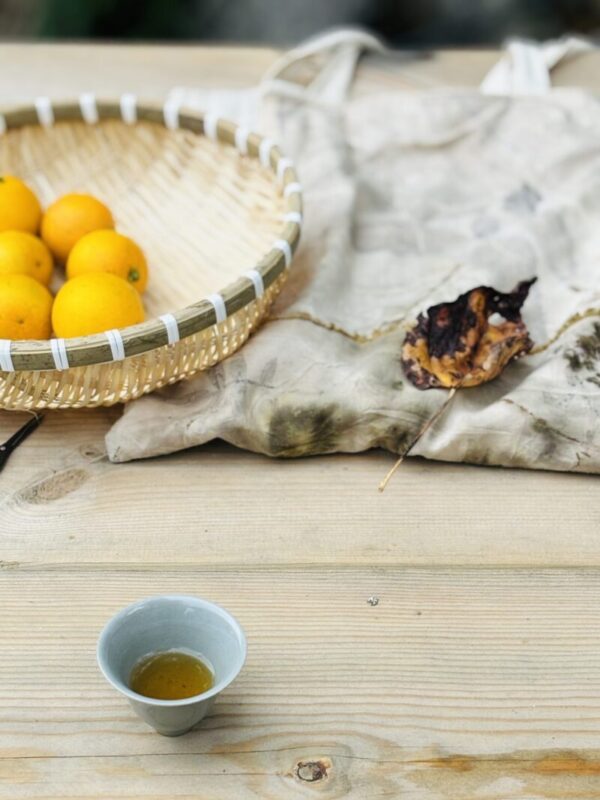
by Charlotte Yao
Oolong tea means “black dragon” in Chinese. It is between green tea and black tea. Oolong tea has a special taste. This taste comes from partial oxidation.
This gives it some bitterness and some sweetness. It also has a flowery smell and a smooth end. Oolong tea has many things inside. It has catechins, theaflavins, amino acids, and floral notes. These make each cup taste different. Oolong tea has a long history in China and Taiwan. But it is not made as much as green or black tea in the world.
Here’s how global tea production compares in 2023:
Tea Type | Global Production Volume (2023) | China's Share of China's Total Production |
|---|---|---|
Green Tea | Largest segment globally | 57.9% |
Black Tea | Second largest segment globally | 14.8% (approx.) |
Oolong Tea | Much smaller share globally | 10% |
Key Takeaways
- Oolong tea is a special kind of tea. It is only partly oxidized. This gives it a taste between green and black teas. It has flowery and sweet flavors.
- Oolong tea has a long history. It started in China over 1,000 years ago. It changed during the Ming and Qing Dynasties. Later, it spread to Taiwan.
- Oolong tea is made with special steps. These steps are withering, bruising, and rolling. They help make oolong’s rich flavors and smells.
- Wuyi Mountain oolong is very famous. Da Hong Pao is the most well-known kind. People love it for its rare quality. Its taste comes from the special soil and weather.
- Oolong tea is good for your health. It has antioxidants and helps your metabolism. You can brew it in many ways. This lets you enjoy its different flavors.
Oolong Tea Origins
Name and Meaning
You might wonder why people call it "oolong tea." The name comes from the Chinese words "wu long," which mean "black dragon." This name first appeared in a book from 1857 called Miscellaneous Notes on Fujian by Shi Hongbao. The name describes the tea leaves. When you look at them, you see they are dark, long, and curly, almost like a dragon. In Chinese culture, dragons stand for strength and good luck. People often use symbols like dragons when naming special teas. Some stories from Anxi tell about a tea farmer named Sulong, who people called "Wulong" or "dark dragon." His story connects the tea to both a person and a symbol, showing how important oolong tea is in Chinese tradition.
Early History
Oolong tea has a long and rich history. You can trace its roots back over 1,000 years to Fujian province in China. At first, people made a tea called Beiyuan tea. This tea was pressed into cakes and given to emperors during the Song Dynasty. Later, people stopped making tea cakes. They started making loose leaf tea instead. This change happened during the Ming Dynasty, after Emperor Zhu Yuanzhang banned steamed tea cakes in 1391. Farmers in Fujian began to experiment with new ways to process tea. They learned that letting the leaves oxidize a little gave the tea a special taste. This process led to the birth of oolong tea.
Here is a quick look at how oolong tea changed during the Ming and Qing Dynasties:
Dynasty | Key Changes in Oolong Tea Production | Impact and Evolution |
|---|---|---|
Ming | - Stopped making tea cakes | - Made tea production easier |
Qing | - Farmers noticed natural oxidation | - Modern oolong tea methods began |
You can see that oolong tea started in Fujian and then spread to places like Taiwan. Wuyi Mountain in Fujian became famous for making some of the best oolong teas, such as Da Hong Pao.
Legends and Stories
Many legends surround the birth of oolong tea. One popular story from Anxi tells about Sulong, a farmer who picked tea leaves but left them out overnight after hunting. The leaves changed color and flavor because they started to oxidize. When Sulong tasted the tea, he found it had a new and wonderful taste. People began to call this tea "Wulong" after him. This story shows how accidents and nature can lead to new discoveries.
In Taiwan, you might hear stories about a tea called Oriental Beauty. Some say a British queen named the tea after tasting it, but historians believe this story is not true. Another story tells about a farmer who sold his tea for a very high price and bragged about it. People started calling the tea "Pengfeng," which means "bragger's tea." Old trade journals from Taiwan support this story, showing that the tea was very valuable and well-known.
Historians say that many stories about oolong tea mix facts with myths. You may never know the exact truth, but these legends help you understand why people value oolong tea so much.
Oolong vs. Other Teas
Processing Differences
You may wonder what makes oolong tea different from green and black teas. The answer lies in how each tea is processed. Tea makers use oxidation to change the color, flavor, and aroma of the leaves. Green tea is not oxidized. Farmers steam or roast the leaves quickly to stop oxidation. This keeps the leaves green and fresh. Black tea is fully oxidized. The leaves turn dark and develop a strong taste. Oolong tea sits between these two. It is partially oxidized, usually between 10% and 80%. This means the leaves change color and flavor, but not as much as black tea.
When you look at the steps, you see more differences. Green tea leaves dry in the shade and then get roasted or steamed. Black tea leaves go through full oxidation, which changes their chemicals and gives them a rich color. Oolong tea uses special steps like withering, bruising, and rolling. These steps help create complex aromas and flavors. The partial oxidation and unique handling make oolong tea stand out from the rest.
Tip: The way tea leaves are handled after picking decides if you get a fresh, grassy green tea, a bold black tea, or a complex oolong tea.
Flavor and Aroma
You can taste the difference between these teas right away. Oolong tea offers a wide range of flavors. Lightly oxidized oolongs taste floral and fruity, with a gentle sweetness. Darker oolongs have toasty, nutty, or even chocolate-like notes. Roasting adds extra layers, making the flavor more complex. This variety comes from the partial oxidation and careful roasting.
Here is a table to help you compare the flavor and aroma of each tea:
Tea Type | Flavor Notes | Aroma Notes |
|---|---|---|
Oolong | Floral, nutty, roasted, fruity, honey, apricot, peach | Bold and diverse; over 100 aromas; flowery and fruity fragrances |
Green | Light, delicate, fresh, grassy, vegetal | Clean, refreshing, plant-like, chestnut, orchid, seaweed |
Black | Rich, smooth, mild, sometimes fruity | Sweet, mild; flowery, fruity, sweet potato |
Oolong tea gives you a more complex and nuanced taste than green tea. You may notice hints of honey, apricot, or peach. The finish often feels smooth and slightly sweet. Green tea tastes lighter and more crisp, with grassy or minty notes. Black tea feels richer and smoother, with a milder character and sometimes a sweet potato flavor. The partial oxidation of oolong tea lets it blend the best parts of both green and black teas.
Caffeine Content
You might also want to know how much caffeine is in your cup. The caffeine content in tea depends on the type and how it is processed. Oolong tea usually has caffeine levels between green and black teas. On average, oolong tea contains about 19.31 mg of caffeine per gram. Black tea has around 17.77 mg per gram, while green tea has about 16.28 mg per gram. The amount can change based on how the tea is made and brewed.
Here is a chart that shows the average caffeine content and the caffeine/theanine ratio for each tea type:
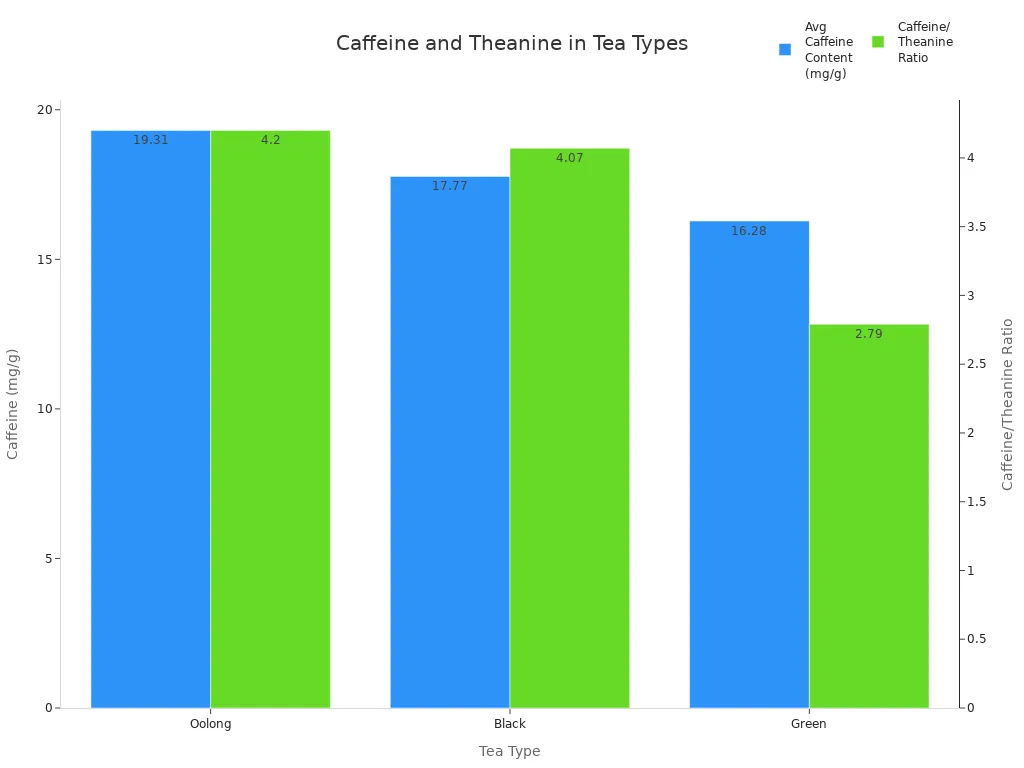
Oolong tea can have a wide range of caffeine, from about 11 to 40 mg per gram. Black tea sometimes has more caffeine per serving, up to 130 mg in a large cup. Green tea usually has the least. The way tea is processed, including steps like withering and firing, can change the caffeine level. If you want a tea with a moderate amount of caffeine and a rich taste, oolong tea is a good choice.
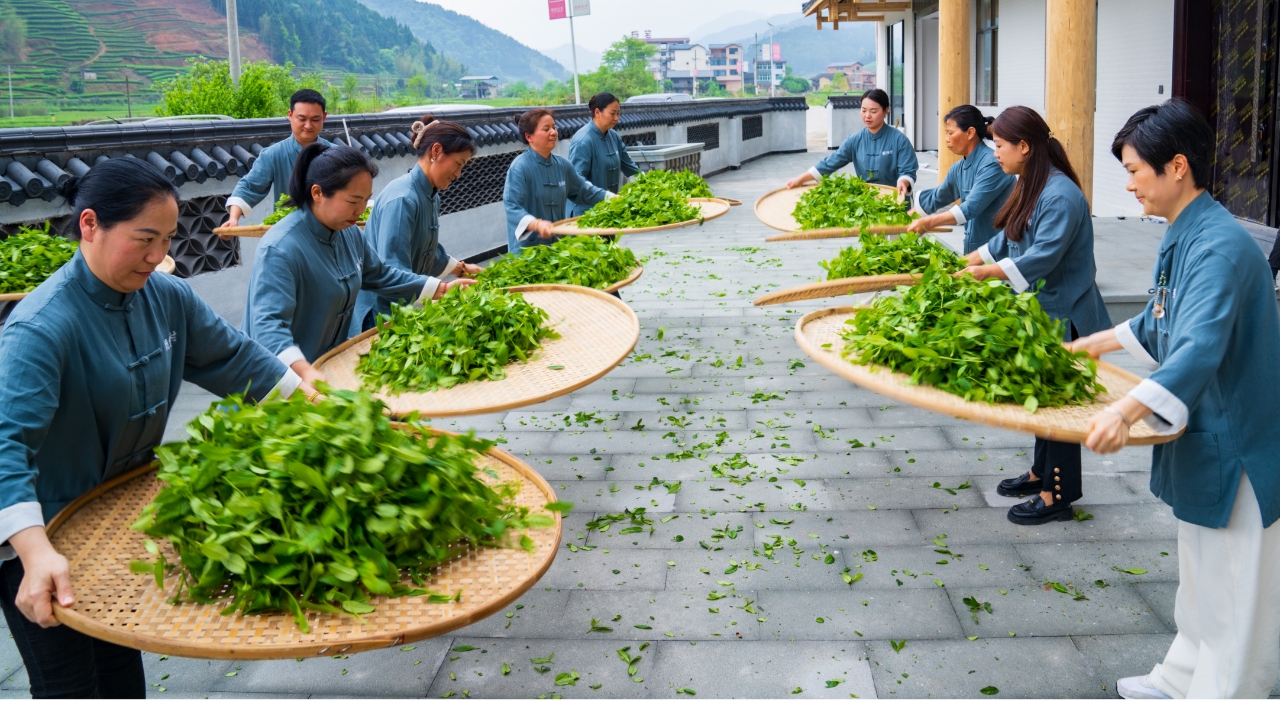
Oolong Tea Processing
Harvesting
You start with the harvest. The best oolong tea comes from careful picking. Farmers usually harvest the leaves three to four times each year. Spring brings the highest quality and quantity. You want to pick the top three or four young leaves by hand. This method takes time, but it gives you the best leaves. Some farms use machines that look like hedge trimmers with vacuum bags. With good care, machine harvesting can still give you good tea. After picking, you need to process the leaves right away. This keeps the leaves fresh and helps create the tea’s unique flavor.
Aspect | Best Practice Details |
|---|---|
Timing | Harvest 3-4 times a year; spring harvest yields best quality and quantity. |
Hand Harvesting | Pick the top 3-4 young leaves (within 60 days) by hand for optimal quality. |
Machine Harvesting | Machines with vacuum bags are common; quality loss is minimal with good management. |
Immediate Processing | Start processing right after harvest to preserve quality and flavor. |
Oxidation
After harvesting, you move to oxidation. This step changes the color, flavor, and aroma of the leaves. You let the leaves wither in the sun and then indoors. This reduces moisture and makes the leaves soft. Next, you gently shake or tumble the leaves. This bruises the edges and starts oxidation. Oxygen reacts with the leaf juices, changing the flavor and color. You control the oxidation level carefully. Lightly oxidized oolong teas look green and taste floral. Heavily oxidized teas turn darker and taste richer, sometimes with fruity or roasted notes. When you reach the right level, you stop oxidation by heating the leaves. This locks in the flavor and aroma.
Tip: The degree of oxidation decides if your tea tastes light and floral or deep and toasty.
Shaping and Firing
Now you shape and fire the leaves. You roll the leaves to break down the cells and help release flavor. Some oolong teas are rolled into tight balls, while others are twisted into long strips. The rolling style changes how the tea looks and tastes. After shaping, you dry and roast the leaves. Traditional methods use pan-frying or baking. Modern methods use electric or charcoal heat. Roasting adds layers of flavor, from sweet and fruity to smoky and nutty. Drying removes any leftover moisture and makes the tea ready for storage.
Here are the main steps in oolong tea processing:
- Withering and cooling to remove moisture.
- Rolling and oxidation to develop flavor.
- Roasting and drying to finish the tea and enhance aroma.
- Each step shapes the final taste, aroma, and texture of your cup of oolong tea.
Wuyi Mountain Oolong 岩茶
Unique Terroir
When you visit the Wuyi Mountains in China, you step into a world shaped by rocks, cliffs, and flowing streams. The tea plants here grow in mineral-rich, reddish soil. This soil gives the tea a special taste called "yan yun,"岩韵 or rock rhyme. You can taste a hint of minerals in every sip. The large rocks and cliffs create small spaces where tea plants thrive. These rocks block the sun in the morning and afternoon, so the plants only get strong sunlight for a few hours each day. Water from the cliffs drips down and nourishes the roots. The rainy spring season means tea makers must roast the leaves longer at low temperatures, which brings out fruity and mineral flavors.
The Wuyi Mountains have different tea-growing regions. Each region has its own soil and climate. Here is a table to help you see the differences:
Region | Soil Type | Key Minerals | Special Features |
|---|---|---|---|
Zhengyan | Purple sandy shale | Potassium, manganese | Narrow valleys, steep peaks, best for rock tea |
Banyan | Red rock soil | Aluminum, less potassium | Near valleys, acidic, close in quality to Zhengyan |
Zhou Cha | Yellow loam | Fertile, more water | River plains, less mineral taste |
Waishan | Various | N/A | Outside core area, not true rock tea |
You find that the Zhengyan area produces the most prized teas. The unique mix of rocks, soil, and climate shapes the flavor and quality of Wuyi oolong tea.
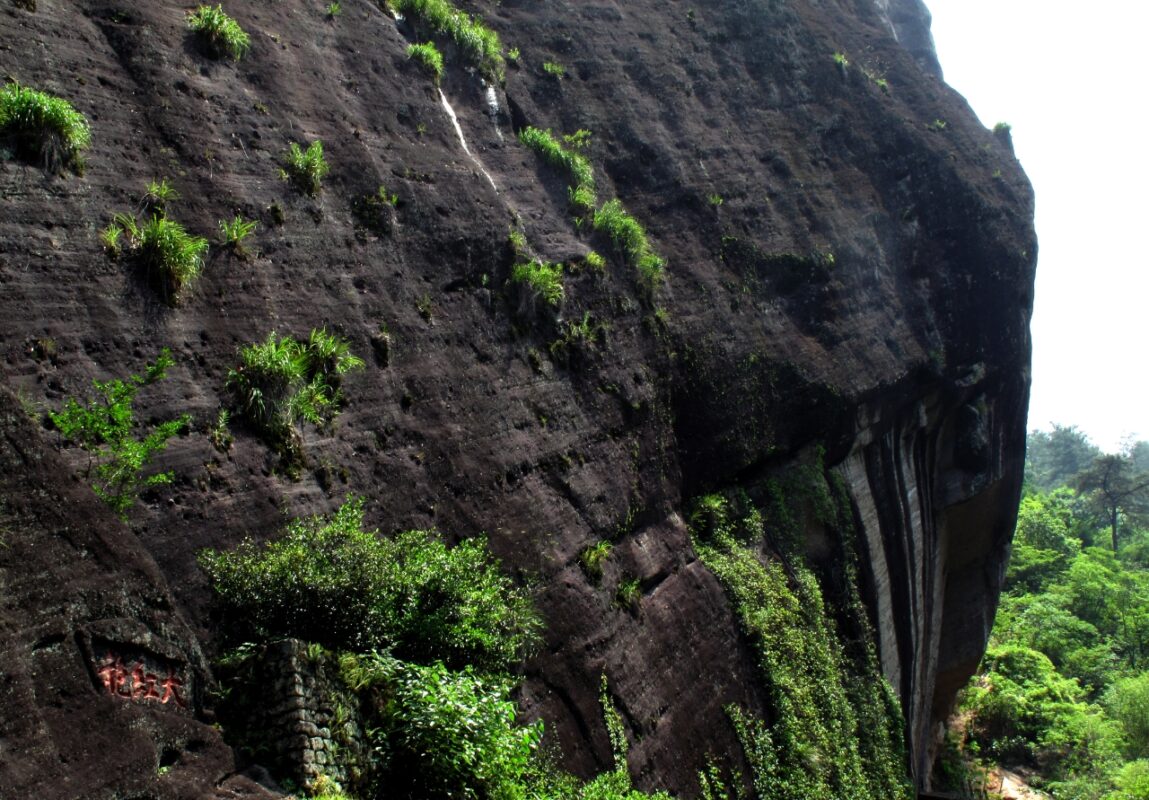
Da Hong Pao (Big Red Robe)
Da Hong Pao stands as the most famous Wuyi oolong tea. People call it the “King of Oolong Teas.” Legends say a scholar once fell ill on his way to exams. Monks gave him tea from special bushes, and he recovered. In thanks, he wrapped his red robe around the bushes. This act gave the tea its name, which means “Big Red Robe.” Another story tells of an emperor’s mother who was healed by this tea, leading to royal protection for the bushes.
You can find only a few original Da Hong Pao bushes in the Wuyi Mountains. These bushes are hundreds of years old and protected by the government. Each year, they produce less than one kilogram of tea. This makes the tea very rare and valuable. In fact, a small amount once sold for over $30,000 per ounce. The tea’s flavor is rich and complex, with notes of dark cocoa, roasted grains, and a mineral finish. The careful hand-picking and roasting add to its high quality.
Da Hong Pao is now widely recognized as the representative of Wuyi rock tea.
While the term originally referred to a single-varietal tea, blended versions made from multiple cultivars have also become very popular.
At times, some may criticize blended Da Hong Pao for lacking the rarity of the pure varietal.
However, blending different tea cultivars is actually a traditional craft in Wuyi tea-making.
It requires a deep understanding of each tea’s characteristics, and only the most experienced and skilled tea masters can create a Da Hong Pao that is both distinctive and harmoniously balanced in flavor.
You can think of it as the work of a master perfumer — their blend is a signature, and no two are ever the same.
Da Hong Pao is more than just a drink. It is a symbol of health, honor, and tradition in Chinese culture. When you taste it, you enjoy a piece of history and the spirit of the Wuyi Mountains.
Hot
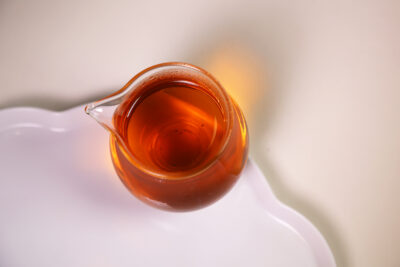
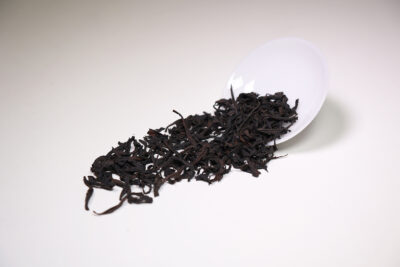
Select options
This product has multiple variants. The options may be chosen on the product page
Health and Preparation
Health Benefits
You may wonder how oolong tea can help your health. Scientists have studied the special plant chemicals in this tea, such as theasinensins. These chemicals act as strong antioxidants. They help protect your cells from damage. Studies in animals show that oolong tea can lower blood sugar, reduce inflammation, and even help prevent some cancers. You may also find that it supports your heart and helps control weight by speeding up your metabolism.
Many people drink oolong tea for its possible health effects. Some large studies link regular drinking to a lower risk of heart disease and stroke. Drinking this tea may also help keep your bones strong and your teeth healthy. Some people notice better skin, especially if they have eczema. You should remember that most research comes from animal studies or small human trials. More research is needed to know all the benefits for sure.
Note: Oolong tea contains caffeine. Too much can cause trouble sleeping or make you feel nervous. Pregnant women should limit how much they drink.
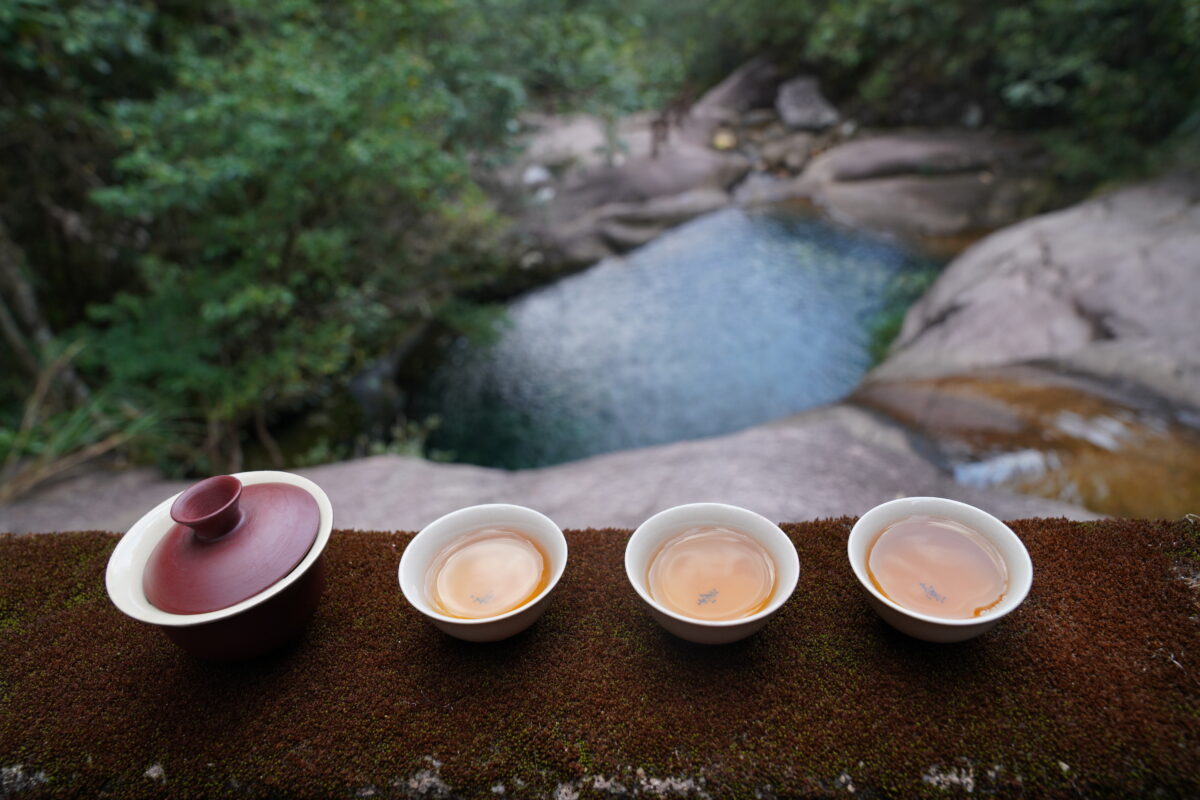
Brewing Methods
You can brew oolong tea in different ways to bring out its best taste and smell. The Gongfu style uses a small teapot or gaiwan. You use more leaves and steep them for a short time. This method lets you enjoy many infusions and notice how the flavor changes.
Here is a simple guide for Gongfu brewing:
- Heat water to about 195°F to 205°F (90°C to 96°C).
- Warm your teapot or gaiwan with hot water.
- Add 5-8 grams of tea leaves for every 120ml of water.
- Rinse the leaves quickly with hot water and pour it out.
- Steep the first infusion for 5-10 seconds.
- Increase the steeping time for each new infusion.
You can also use the Western method. Use 2-3 grams of leaves per 8 ounces of water. Steep for 2-5 minutes, depending on how dark the tea is. Always use fresh, filtered water for the best taste.
Oolong Type | Water Temp (°F) | Steep Time (Western) | Steep Time (Gongfu) |
|---|---|---|---|
Light | 175-185 | 1-2 min | 30 sec |
Medium | 185-195 | 2-3 min | 45 sec |
Dark | 195-205 | 3-5 min | 1 min |
Tip: Try different steeping times and temperatures to find your favorite flavor.
Tasting Tips
When you taste oolong tea, use your senses. Look at the color of the tea. Smell the aroma before you sip. Take a small sip and let the tea cover your tongue. Notice if you taste floral, fruity, honey, or roasted notes. Some teas may remind you of stone fruit, cinnamon, or even a hint of minerals.
Tea experts use special tasting panels to judge oolong tea. They look for bitterness, sweetness, and aroma. You can do your own tasting at home. Try teas from different regions and notice how the flavors change with each infusion.
Common flavors you might find:
- Floral
- Fruity
- Honey
- Roasted seaweed
- Mineral
- Cinnamon spice
Enjoy each cup and see how the taste changes as you brew the leaves again.
You now know oolong tea is special because of how it is made. It goes through partial oxidation, which gives it a unique taste. Oolong tea has a long history and many flavors.
- People started making it in the Ming Dynasty. It became important for health and culture. Oolong tea was used in Chinese ceremonies and traded around the world.
- Wuyi Mountain oolong, like Da Hong Pao, is rare and has many flavors. People value it for where it comes from and how it tastes.
Try many kinds and ways to brew oolong tea. You might find a favorite. Oolong tea is always changing. It mixes old traditions with new ideas for everyone who loves tea.
FAQ
- What is the best way to store oolong tea?
You should keep oolong tea in an airtight container. Store it in a cool, dry place away from sunlight. This helps keep the flavor fresh. Avoid strong smells near your tea.
- Can you re-steep oolong tea leaves?
Yes, you can re-steep oolong tea leaves several times. Each steeping brings out new flavors. Many people enjoy tasting how the tea changes with each brew.
- Does oolong tea expire?
Oolong tea does not spoil quickly, but it loses flavor over time. Try to use it within one year for the best taste. Always check for any strange smells or colors.
- Is oolong tea good for weight loss?
Some studies show oolong tea may help with weight loss. It can boost your metabolism and help burn fat. You should drink it as part of a healthy diet and exercise plan.
- Can you drink oolong tea cold?
You can enjoy oolong tea hot or cold. Cold oolong tea tastes refreshing, especially in summer. Brew it as usual, then chill it in the fridge or pour it over ice.
Want to learn more professional tea insights? [ Subscribe to our newsletter 👇 ] and join the world of Teaviews 👏.
